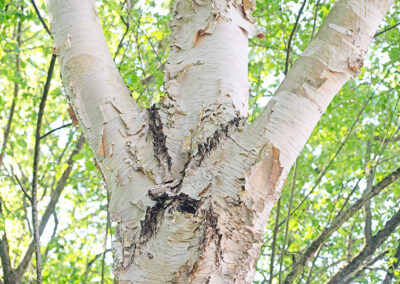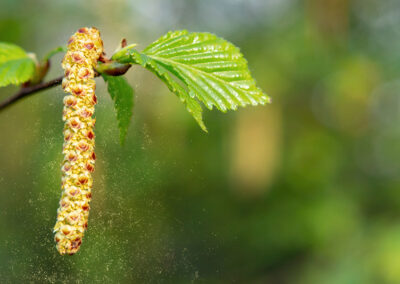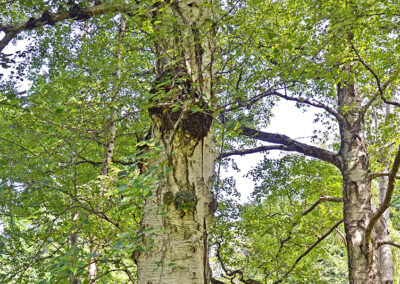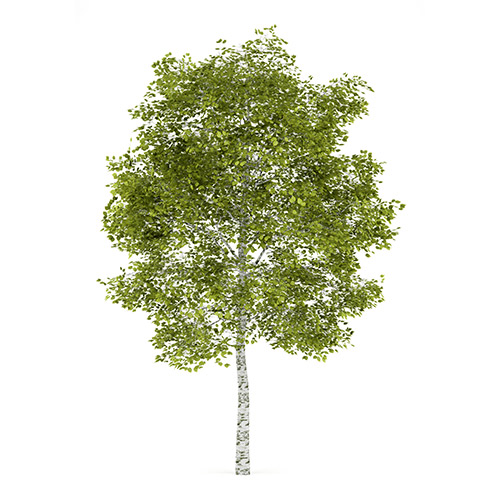
Paper Birch

Pollen Type: Tree
Cross-Reactivity: Other Birches, American Chestnut, American Hazelnut, European Hazelnut, Hop-Bornbeam, American Hornbeam
HS Allergy Extract: Birch Mix
Family: Betulaceae
Genus/Species: Betula papyrifera
Common Names: Paper Birch, White Birch, Canoe Birch
Distribution: All of Canada, south in the United States to Northern California and North Carolina.
Locations: Well-drained soil along streams, ponds, lakes, and swamps. It’s also cultivated as a popular landscape tree.
Pollinating Period: January-April, depending on location
Pollination Method: Wind-pollinated
Description: Paper Birch is a medium to fast-growing, short-lived tree which grows 50’-70’ with a spread of around 35’ at maturity. It can have a single trunk or may develop multiple trunks or branches close to the ground. Its bark is brownish-red when young and later matures into the distinctive white bark that curls and peels. It’s oval to triangular shaped leaves grown on 1” stems and are 2”-4” long with double-toothed edges. They are dark green and smooth on the upper surface; the lower has tiny hairs on the veins. Its leaves turn bright yellow in the fall. Paper Birch is monoecious, meaning one plant has both male and female flowers. Female flowers are greenish, approximately 1 ½” long, and grow from the tips of the twigs. The brown or green male flowers grow in slender, cylindrical flower clusters called catkins. The tree flowers from mid-April to June, depending on its location. Its fruit matures in the fall and appears as numerous tiny winged seeds packed between the catkin bracts.




